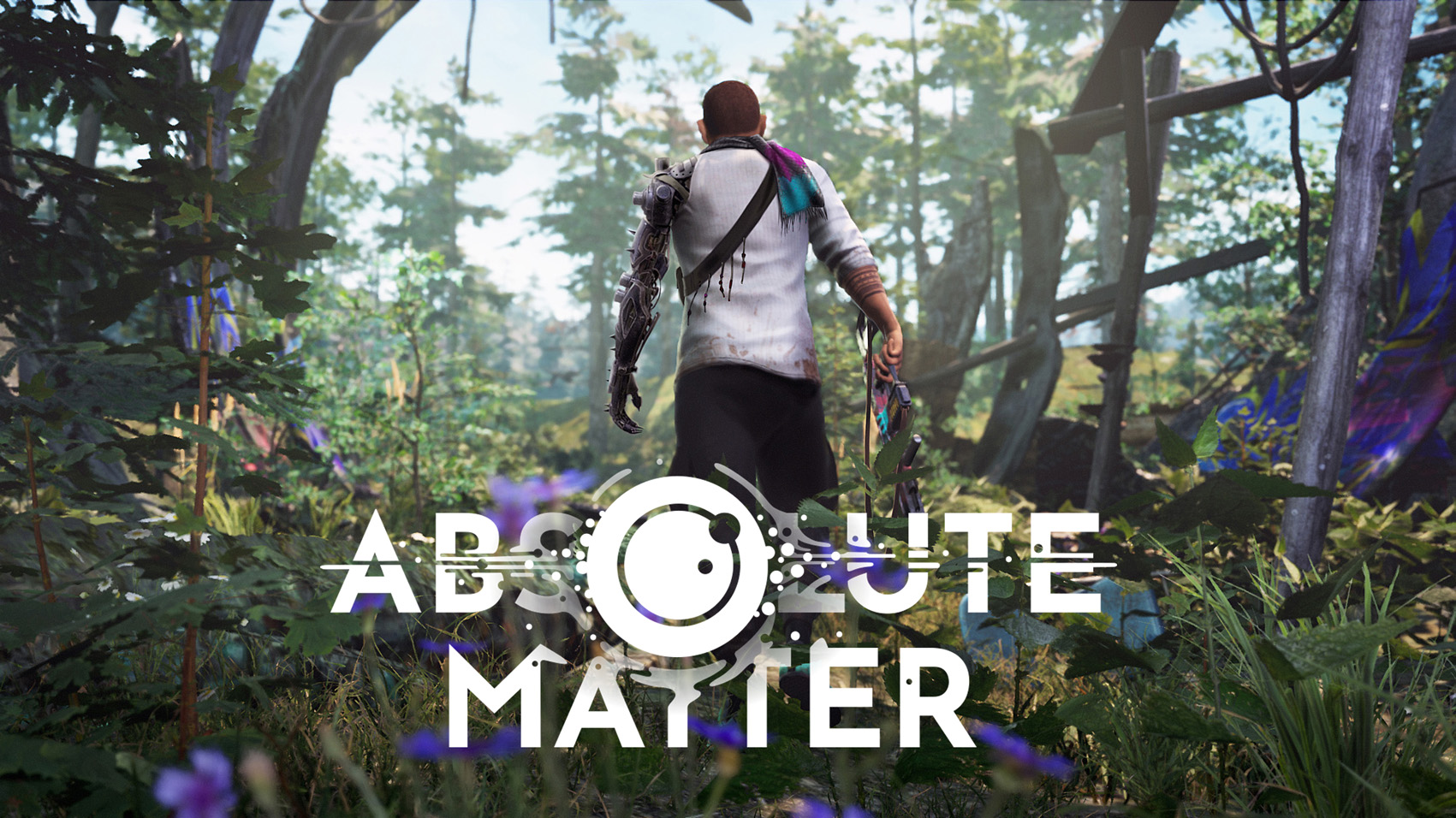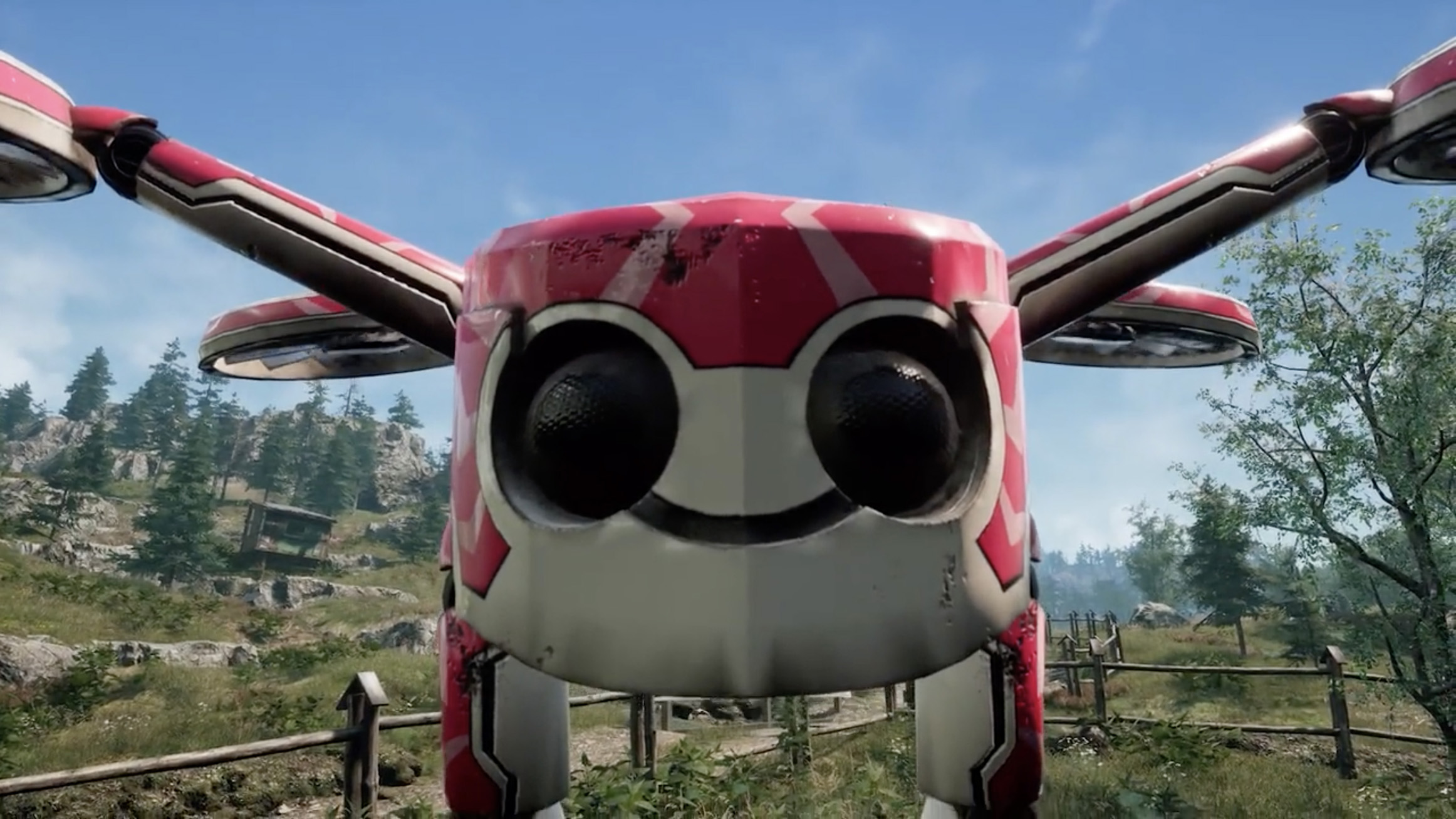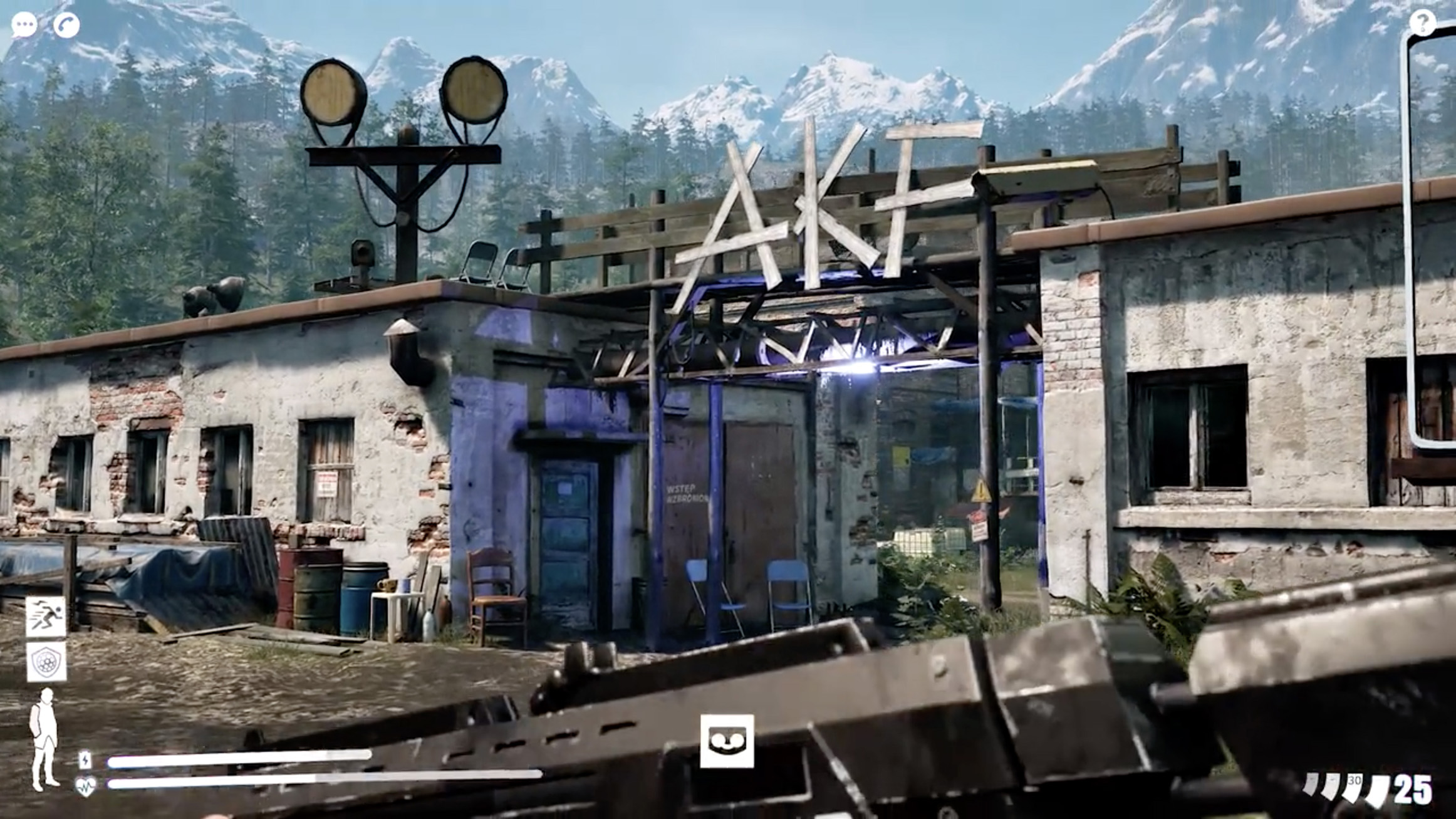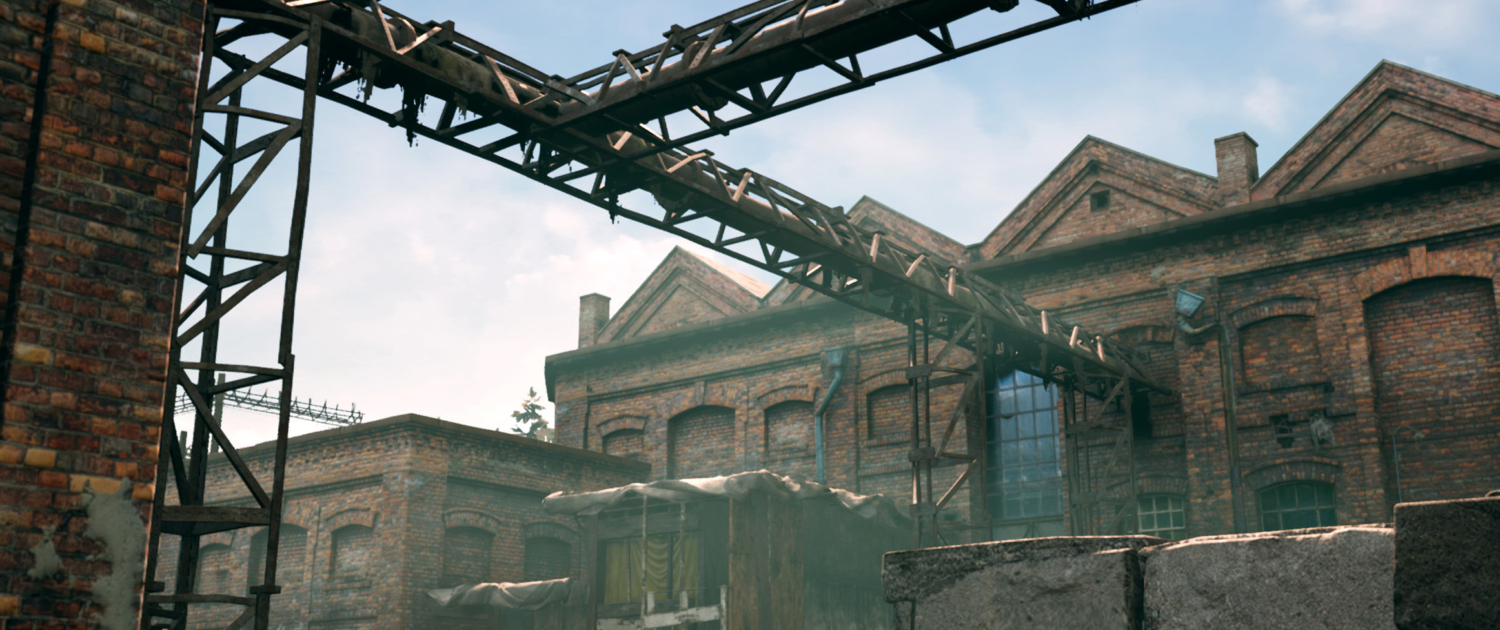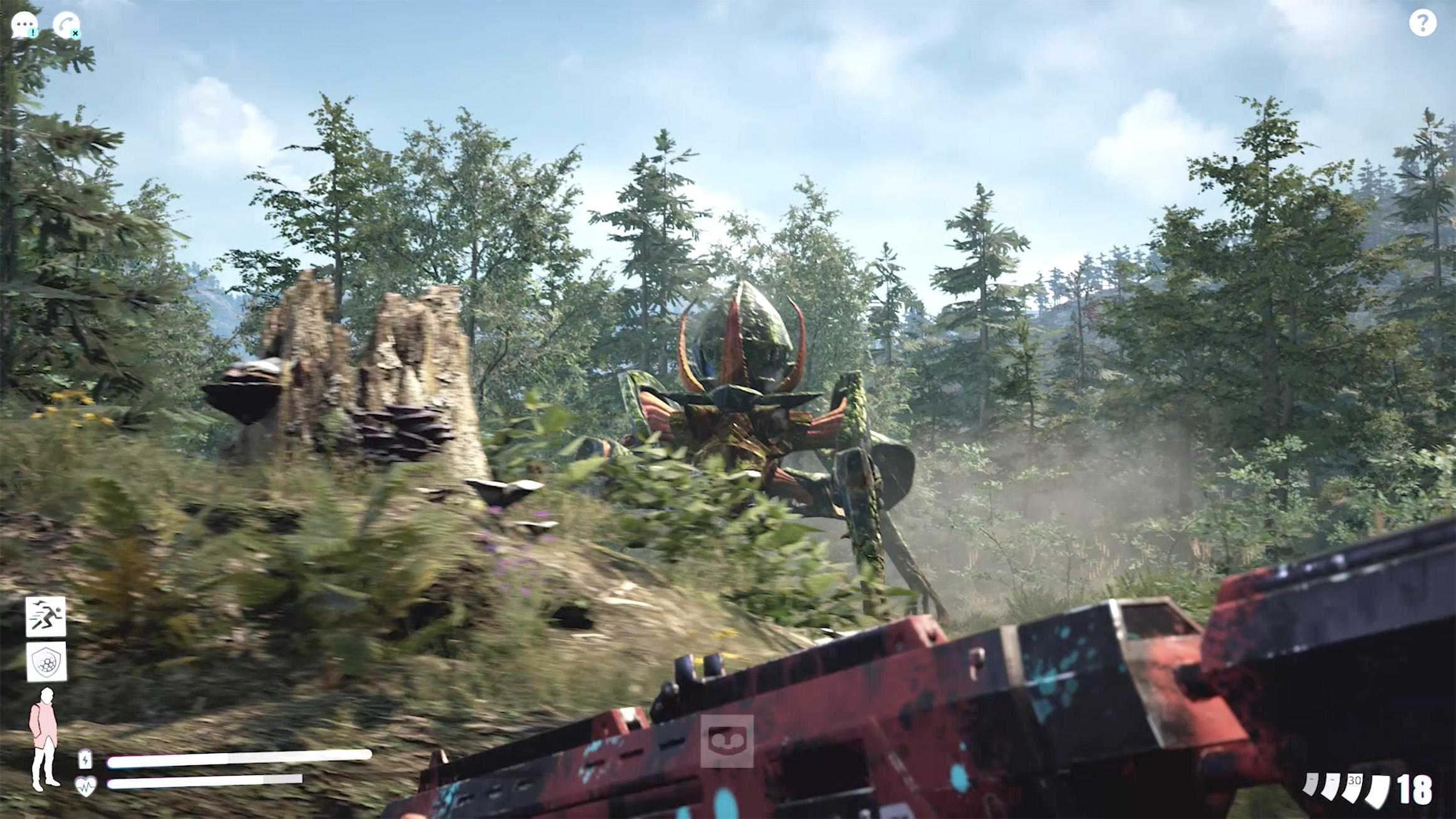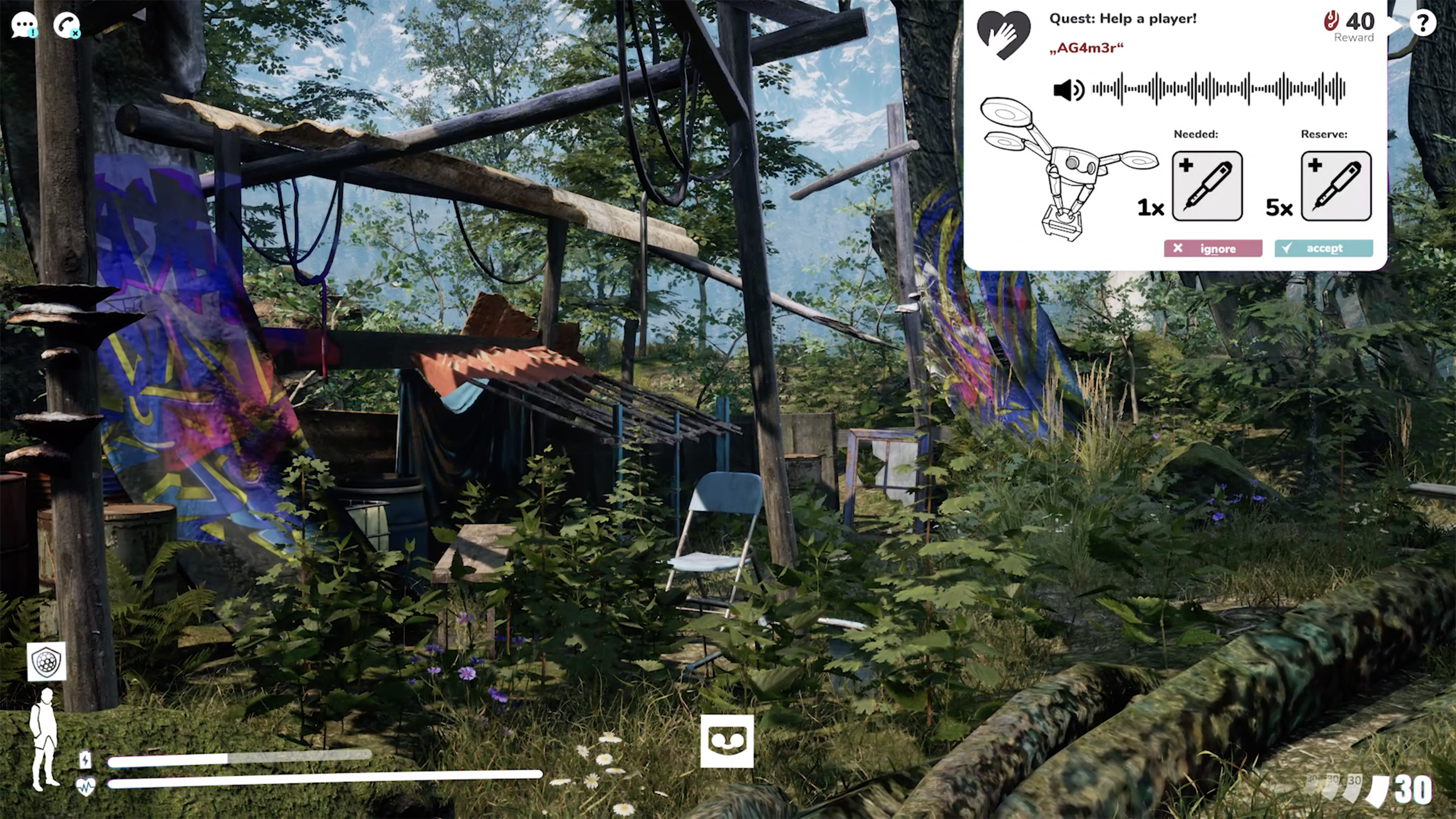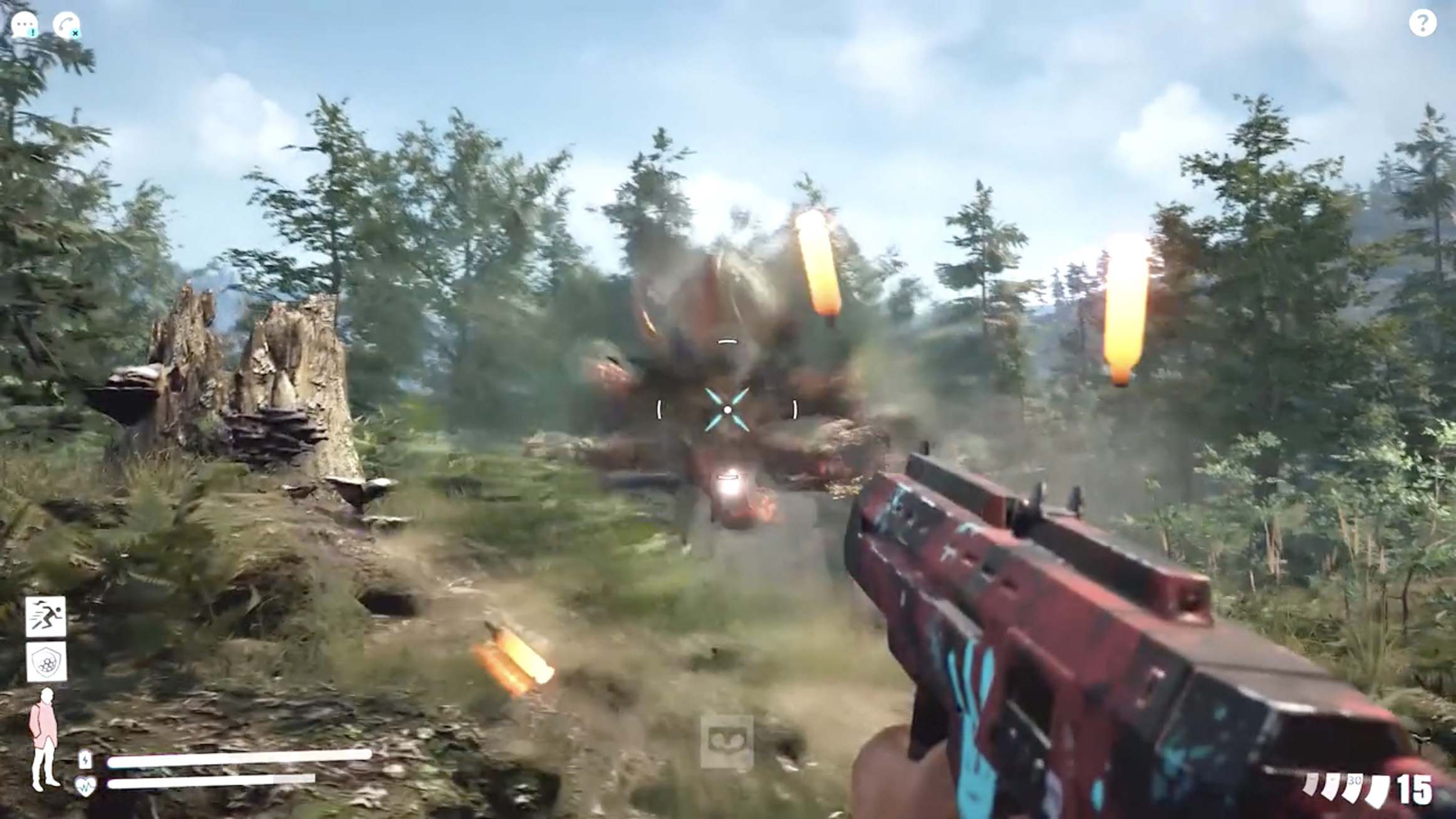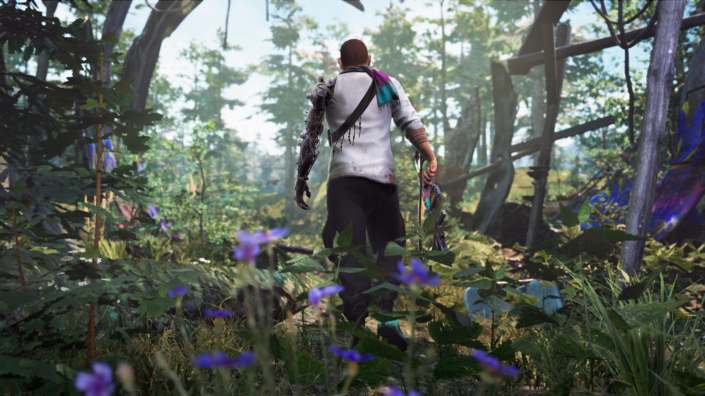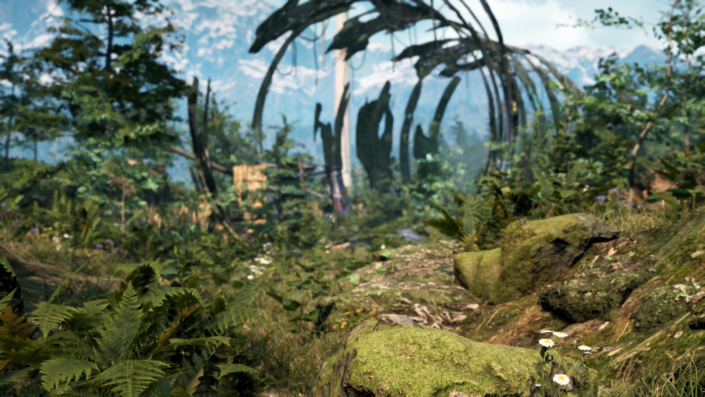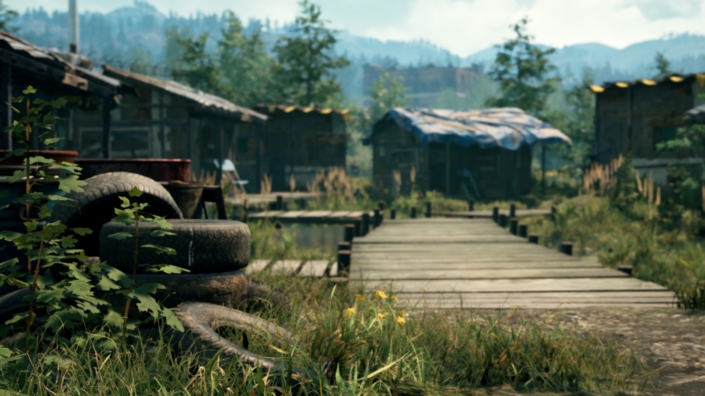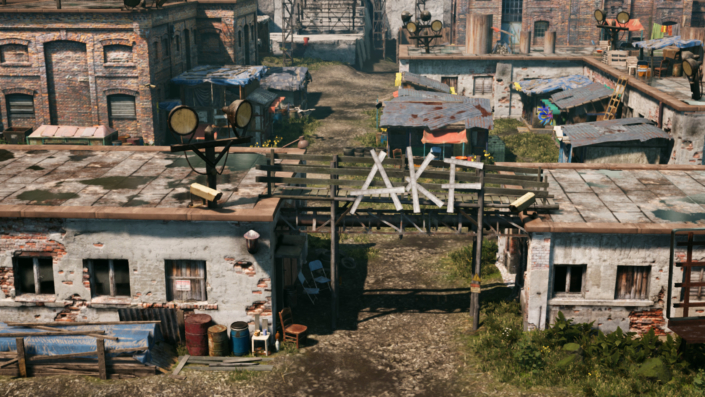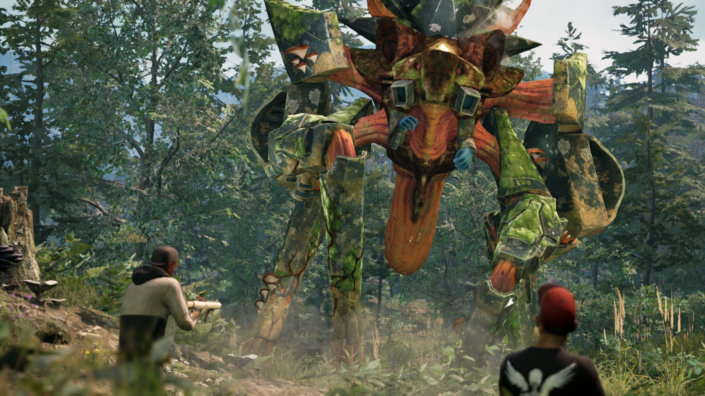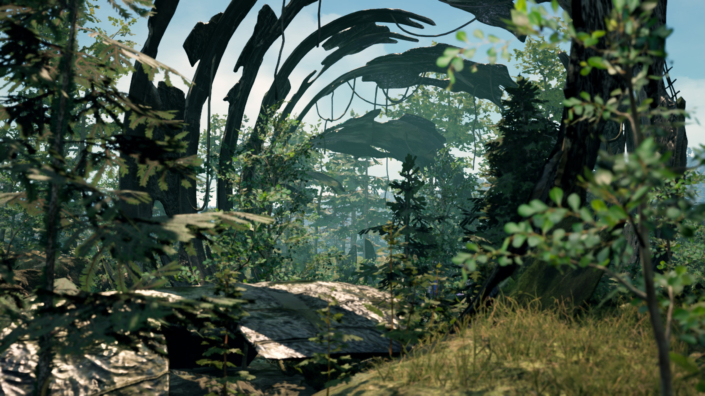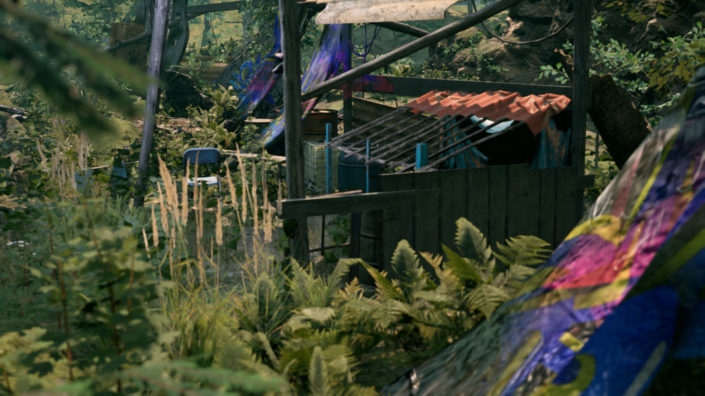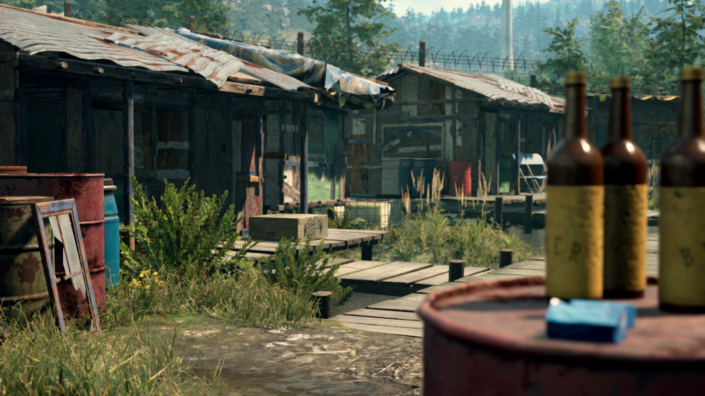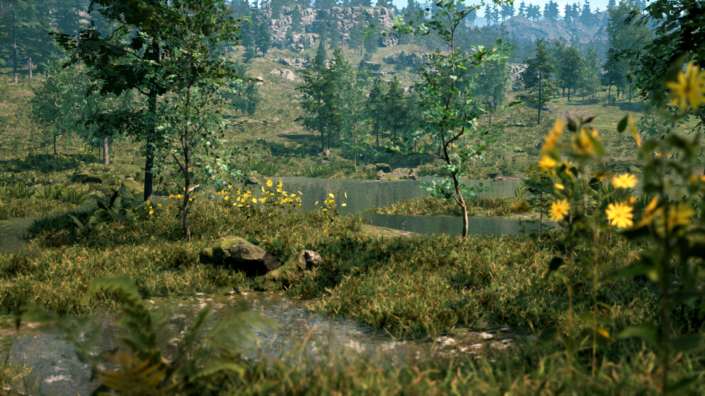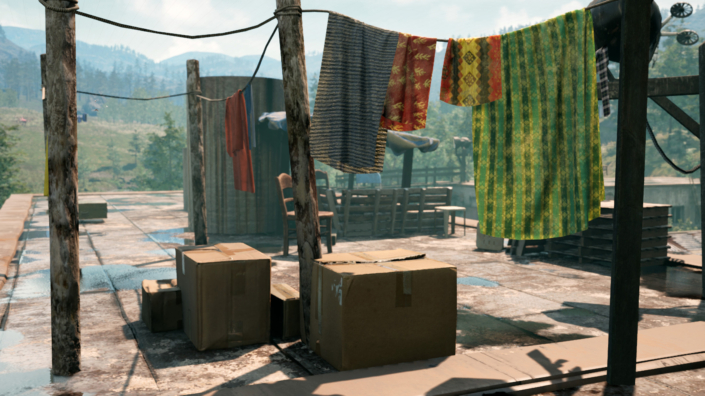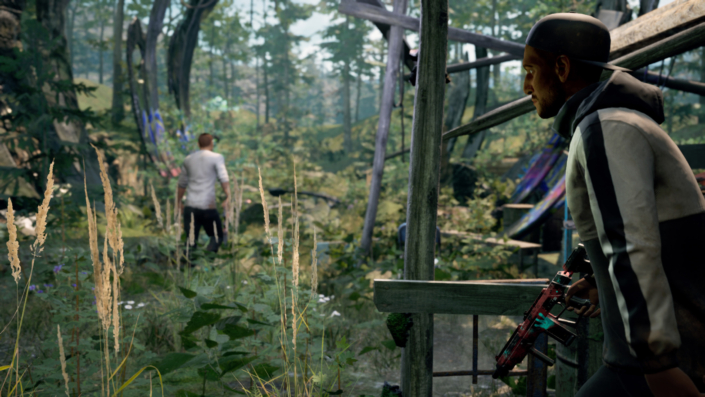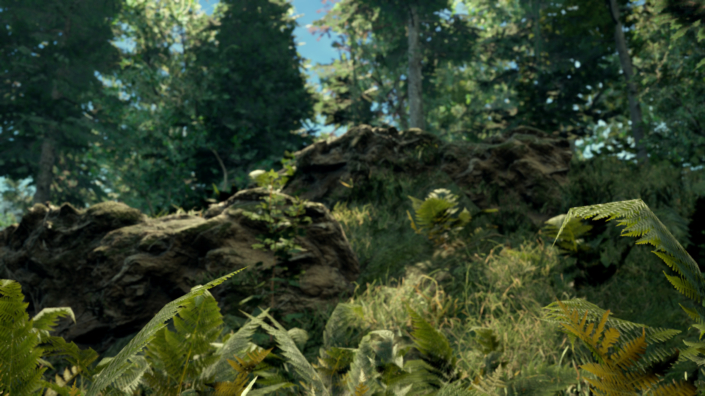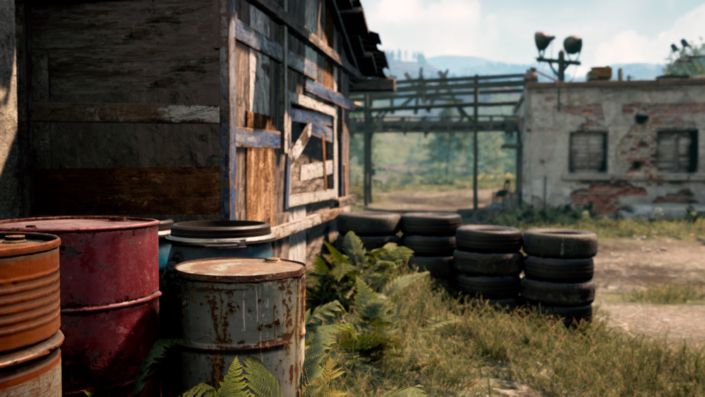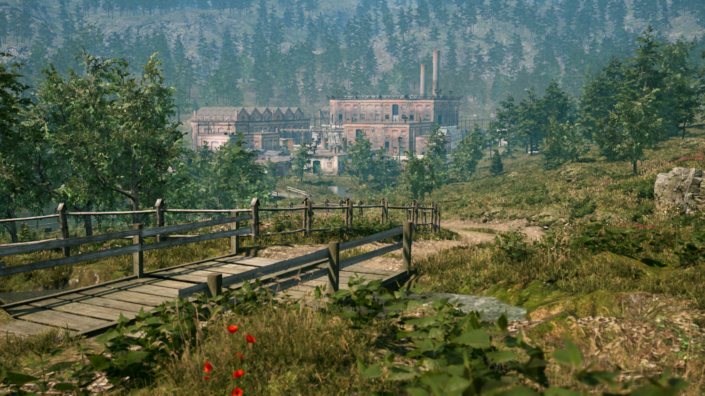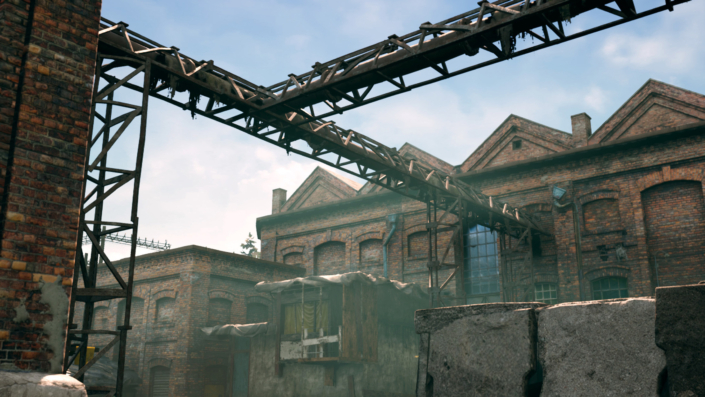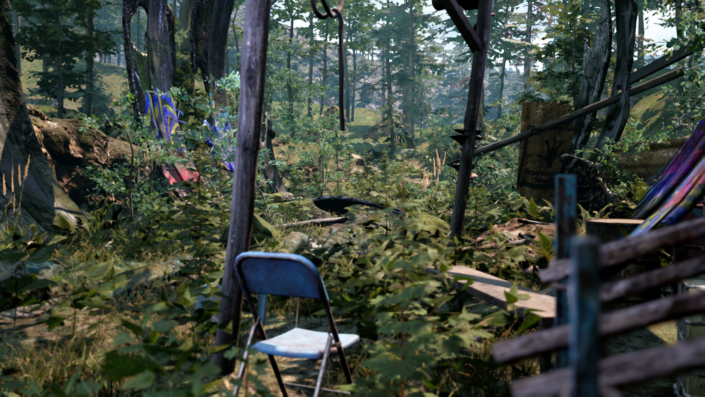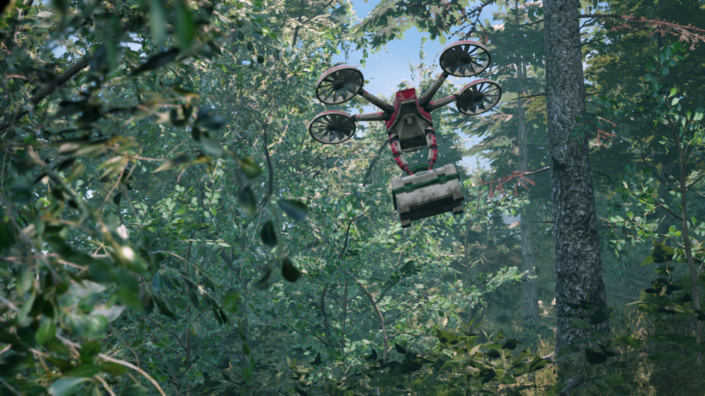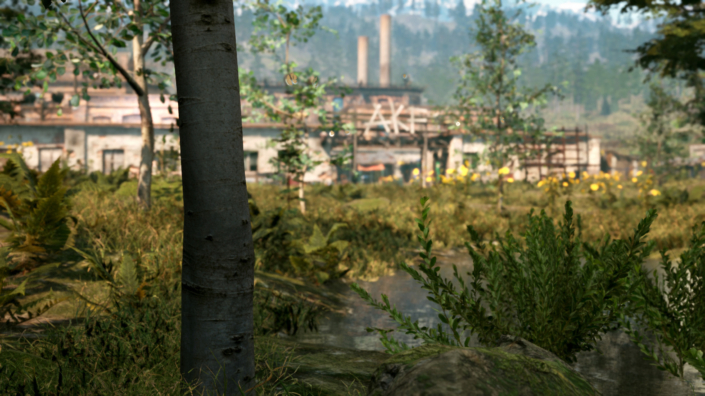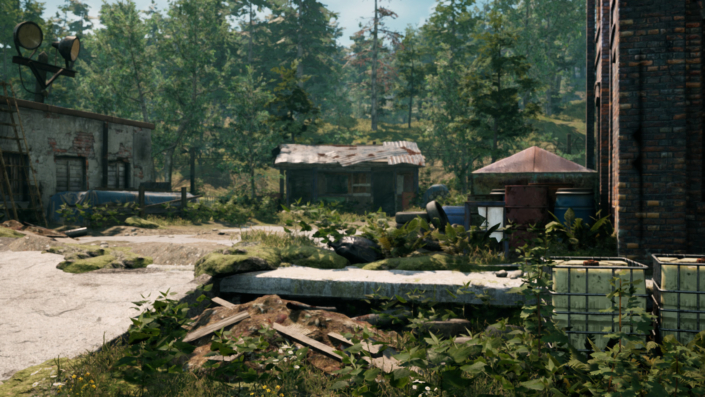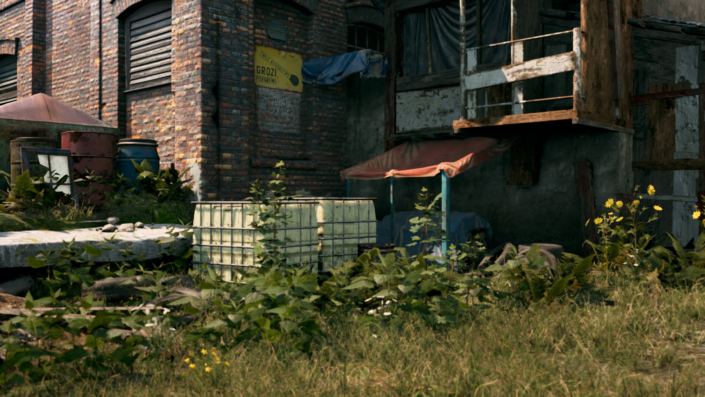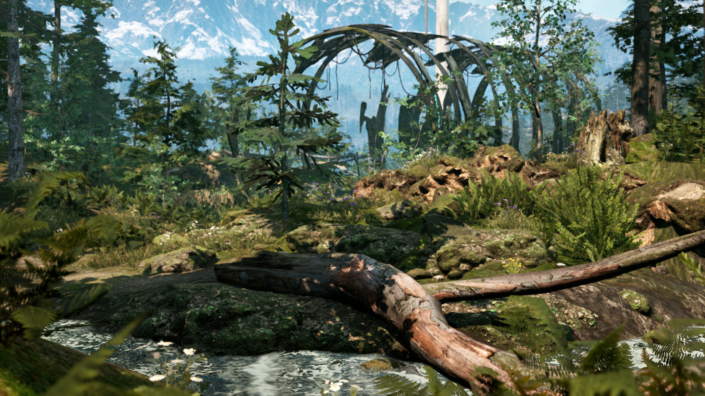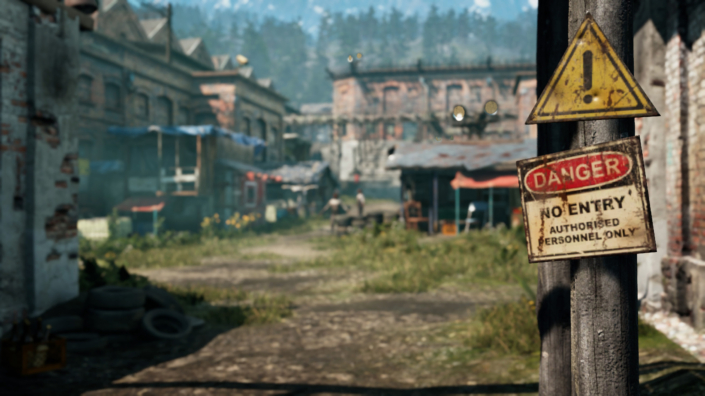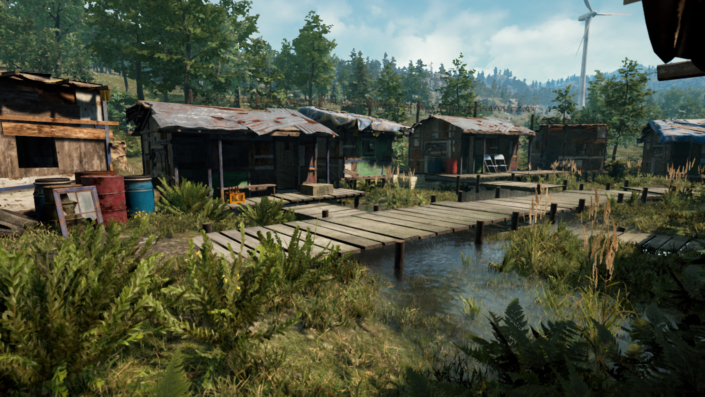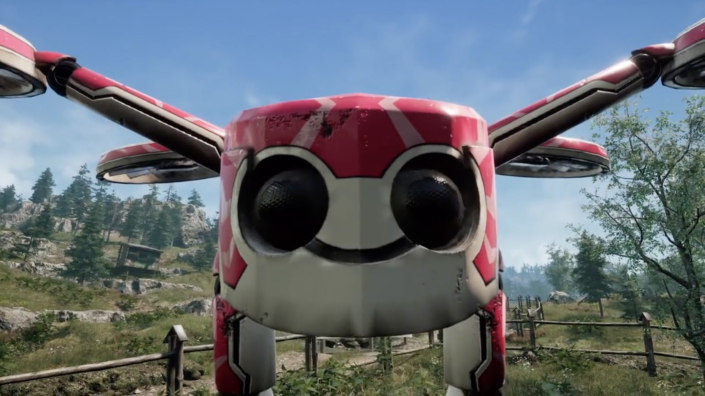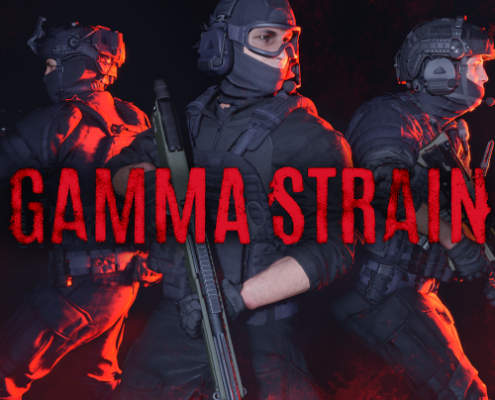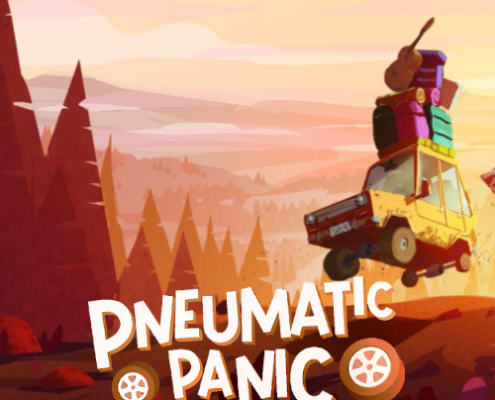DEV INSIGHTS: ABSOLUTE MATTER.
Absolute Matter is an upcoming social permadeath shooter being developed by tool1, a Hamburg-based indie game studio and founding sister studio of Win Win Collective. We sat down with some of the team members to gain some insights into the project.
What inspired the concept of your extraction shooter?
We wanted to make a game based on decision making. For decisions to be meaningful two things are required: an outcome which is hard to predict and strong consequences.
These two requirements made us make a social permadeath game all about player interaction. The similarities to extraction shooters became apparent somewhere along the way.
How do you plan to differentiate your game from other extraction shooters in the market?
Not every player encounter will be a fight. There are many reasons to spontaneously team up. We see this as the major part that differentiates the game from others – although there’s plenty of design decisions that change the gameplay experience furthermore.
Can you share some key design principles that guide the development of your game?
Sure! Let’s pick the player interaction. First of all, we need to make that interaction actually happen. So we make sure that people meet each other a lot and have a reason to interact with each other. One very obvious game design tools here is our resource system. Every player has to choose 1 of (currently) 6 resources while creating the character, that you will have access to for the entire life span of that character. Later in the game all the other resources have to be obtained by trading with other players.
How will the first-person perspective impact gameplay mechanics in your game?
Most importantly: It’s a shooter and therefore first-person is probably the obvious way to go for. Secondly, it pushes immersion quite a bit. Since a strong bond to your avatar is important for you to care about consequences, we value immersion a lot.
Are there unique features or mechanics that players can expect in the first-person view?
Depending on your equipment you might have access to various skills like dashes, hooks, small teleports, shields and so on. Some of these come with artificial limbs, another set of skills comes with the consumption of bio boosters.
How do you balance immersion and accessibility in your gameplay design?
When you start the game, you have a lot of UI support which is explained in the actual game world. These UI addons are basically linked to your avatar’s brain. Once you are more experienced you might decide in a future character creation to change these addons to other more advanced options.
What efforts are being made to create a rich and immersive game world?
Everything we can XD Immersion is really important to us. So we believe the game world should do it’s best to support that. From hints to the story behind “Absolute Matter” to basic storytelling about the life of people in the outlands, we try to put in as much as we can.
What challenges have you encountered in developing a multiplayer shooter, and how have you addressed them?
Typically we always need to balance performance and latency issues with safety issues. We really need to take care of what needs to be computed on our trusted game server and what we can pass to the players’ clients. Another issue is server performance – we need to test the workload of our game servers from time to time to make sure they are running smoothly.
How do you encourage meaningful player interaction?
First of all, we need to bring players together. For that, we designed a macro loop that motivates players to keep moving. They usually want to visit compounds or take part in events to get what they want.
In the second step, we offer a sandbox quest system. Players can create quests for others on their own. These reach from a simple but urgent call for help to set a bounty on someone who betrayed you.
What social features are you implementing to foster a sense of community within the game?
The first important feature in that regard is our spore crawler event. Spore crawlers are aliens that hunt players down. When not fought back by the community, they assimilate parts of the world, build their hives and keep hunting players more aggressively.
The players fighting the spore crawlers back most efficiently rank up in the hunter leaderboards and get unique skin rewards. So everyone can see who brings peace into the game world we live in together.
Are there plans for player-driven economies or collaborative gameplay elements?
The resource system is the major player-driven economy in the game. We decided to make this a slowly refilling free resource for every player to provide to others, instead of having players actually search or craft them inside of the game.
How do you plan to release content updates and expansions to keep the game fresh?
Besides the bigger content updates, we plan to make more frequent smaller changes to keep things fresh and address potential problems. The goal of regular updates is one major reason for us to not rush into early access asap.
Will there be regular events or seasonal changes to maintain player engagement?
We believe the long-term player engagement mostly comes from the core game design and is supported by parts like our account progression and the leaderboards, but sure: We make a living game and see these regular changes and updates as a service that’s necessary for this genre to work long term.
How do you balance adding new content without overwhelming new players?
When we add in content like an event, it won’t change the event density in the game. Every other event will happen less often to make up for the new event. So adding in content won’t change the core of the game. It will simply bring in more variation in the adventures you experience.
How are you involving the community in the development process and gathering feedback?
Besides input and feedback on the discord we value playtesting quite high. In our opinion this game needs early access no matter what. We need to see how the community plays this game to make the right adjustments. We don’t see community design as a separate thing. We see it as a part of the game and therefore a game like this is not possible without a long term testing with the community.
Do you have plans for modding support or community-created content?
Definitely community-created content! On our Discord server, we designed a drone and a weapon skin together with the community.
There are no mods or private servers planned though.
What is your approach to monetization in the game?
We go for a mix of Buy2Play and MTX.
Microtransactions are the obvious one I guess. It’s a multiplayer game with strong immersion. Selling skins that fit the game world is basically what fits perfectly. Probably important to mention here: There is no pay to win! You don’t get better equipment by buying skins, your equipment simply looks different. And the skins fit the game world so no Santa’s hat or Easter Bunny ears to fear.
Buy2Play is planned for two reasons: We want players in the game that really like the concept and are truly interested in the unique approach. Not the ones that play it just because it’s free. We experienced in other games that decisions like these can make a huge difference in how a game is played.
The other reason is a mixture of bots and cheaters. In a Buy2Play product it’s much easier to effectively punish misbehavior of all kinds.
How do you balance the need for revenue with providing a fair and enjoyable experience for all players?
Most of the skins we offer can be found in-game as well. The difference is simply that found skins are usually lost upon death. The skins that you bought stick to your account no matter what.
How do you conduct playtesting to ensure a positive player experience?
We plan for one or more representatives of the player base to be elected by the players to give us the currently most important feedback. We will release video documentation of the talk with the elected players to make sure people have feedback that we honestly and deeply care about the game at least as much as they do.
How do you handle player feedback and incorporate it into the development process?
That depends on the feedback itself. Every problem has its unique solution and needs a unique approach to solve. A general plan on how to handle feedback might be a limiting factor.
Can you share any long-term goals or aspirations for the game?
We dream about a game where you have a really dense personal story with different personal goals for every new character you play. Playing an epic story where you meet gods on other planets right after you helped an innocent child to survive a disaster.
What challenges have you encountered in developing a multiplayer shooter, and how have you addressed them?
Typically we always need to balance performance and latency issues with safety issues. We really need to take care of what needs to be computed on our trusted game server and what we can pass to the players’ clients. Another issue is server performance – we need to test the workload of our game servers from time to time to make sure they are running smoothly.
What steps are taken to minimize latency and ensure a smooth online experience?
We thoroughly examine which mechanics need to be executed on the server to be as safe as possible from cheaters but everything else we leave up to the clients to get rid of the network latency there. Also we work a lot with predictions on the clients and then validate on the server and only correct the outcome if necessary. This way the players will have direct feedback for their actions and it still feels fair.
How do you optimize network infrastructure to support a large number of concurrent players?
Our backend and game servers allow for horizontal scaling. Especially in the backend we have a service fabric that allows for multiple instances of the same service if needed. As our core tech team is really small, we know that we cannot handle all technical issues directly and move as much as possible to the game design or art departments – an example for that is how we handle peak times. Roughly explained: we use an in-game currency that generates over active play time and allows players to travel to different maps hosted on different servers. Depending on how many players we currently want to join, we dynamically change the price for joining a map. This way we can dynamically start additional servers once we reach critical amounts on the running instances and thus can move newly logged in players to those instead of the busy ones in a natural way.
How do you plan to release content updates and expansions to keep the game fresh?
Besides the bigger content updates we plan to make more frequent smaller changes to keep things fresh and address potential problems. The goal of regular updates is one major reason for us to not rush into early access asap.
Will there be regular events or seasonal changes to maintain player engagement?
We believe the long-term player engagement mostly comes from the core game design and is supported by parts like our account progression and the leaderboards, but sure: We make a living game and see these regular changes and updates as a service that’s necessary for this genre to work long term.
How do you balance adding new content without overwhelming new players?
When we add in content like an event, it won’t change the event density in the game. Every other event will happen less often to make up for the new event. So adding in content won’t change the core of the game. It will simply bring in more variation in the adventures you experience.
How do you plan to evolve the game over time based on player feedback and changing industry trends?
At it’s core – we think – the game has a timeless concept, that is worth exploring for many years. Just the fact that human interaction is the center driving point should make it very resistant. But sure we are thinking about the fact that gaming evolves in general. Not only the input devices change, but also the gaming culture and where gaming takes place in the daily life of people. One first step is the cutting of all grinding and leveling that just isn’t that much fun and makes games almost unplayable for a parent for example.
Any famous last words?
We want to express our gratitude to everyone helping us to make our dream project a reality, which includes the many freelancers, followers, and also our families, Gamecity Hamburg and the German Government, the befriended game devs, Epic Games and many more.
WRAP UP!
Make sure to follow the further development of tool1’s upcoming social permadeath shooter Absolute Matter.

